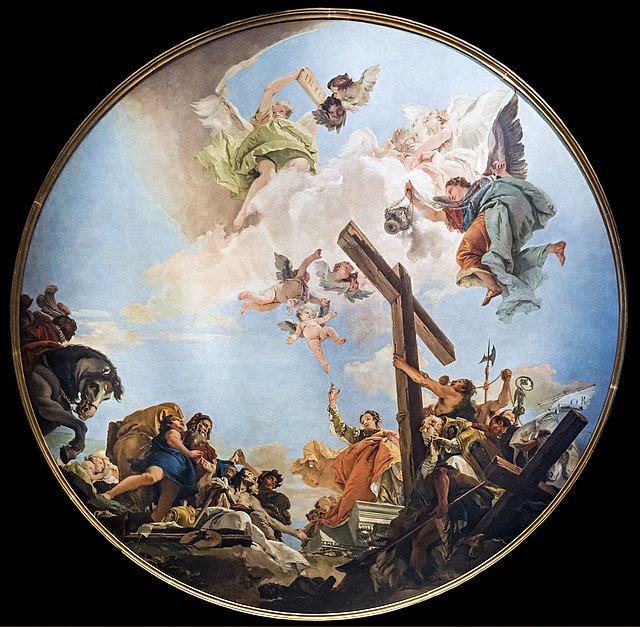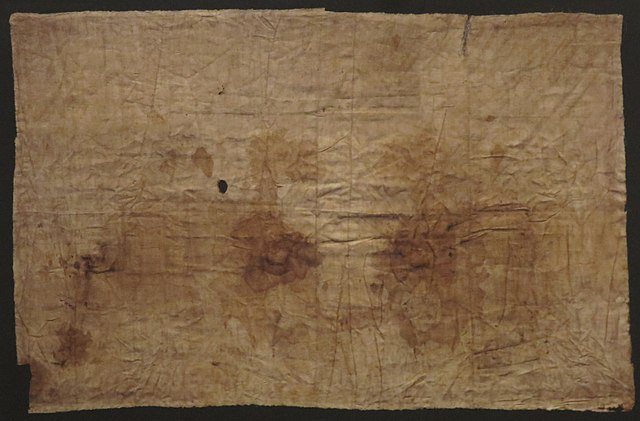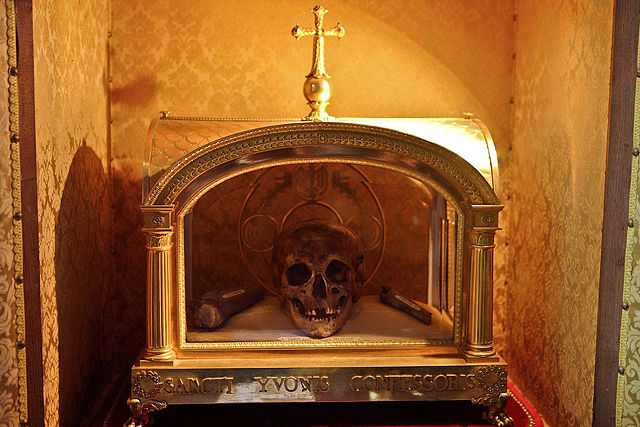Relics associated with Jesus
A number of alleged relics associated with Jesus have been displayed throughout the history of Christianity. While some individuals believe in the authenticity of Jesus relics, others doubt their validity. For instance, the sixteenth-century philosopher Erasmus wrote about the proliferation of relics, and the number of buildings that could be constructed from wooden relics claimed to be from the crucifixion cross of Jesus. Similarly, at least thirty Holy Nails were venerated as relics across Europe in the early 20th century. Part of the relics are included in the so-called Arma Christi, or the Instruments of the Passion.
Discovery of the True Cross, by Tiepolo, 1745
A photo of the Shroud of Turin face, positive left, negative on the right, having been contrast enhanced
The Sudarium of Oviedo.
The Holy Face of Genoa
In religion, a relic is an object or article of religious significance from the past. It usually consists of the physical remains or personal effects of a saint or other person preserved for the purpose of veneration as a tangible memorial. Relics are an important aspect of some forms of Buddhism, Christianity, Islam, shamanism, and many other religions. Relic derives from the Latin reliquiae, meaning "remains", and a form of the Latin verb relinquere, to "leave behind, or abandon". A reliquary is a shrine that houses one or more religious relics.
The reliquary and skull of Saint Ivo of Kermartin (St. Yves or St. Ives) (1253–1303), in Tréguier, Brittany, France
Shrine of Saint Lachtin's Arm, 12th century, Irish
An amphora depicting a Greek hero cult in honor of Oedipus (Apulian red-figure, 380–370 BC)
Buddha relics from Kanishka's stupa in Peshawar, Pakistan, now in Mandalay, Myanmar (2005)








